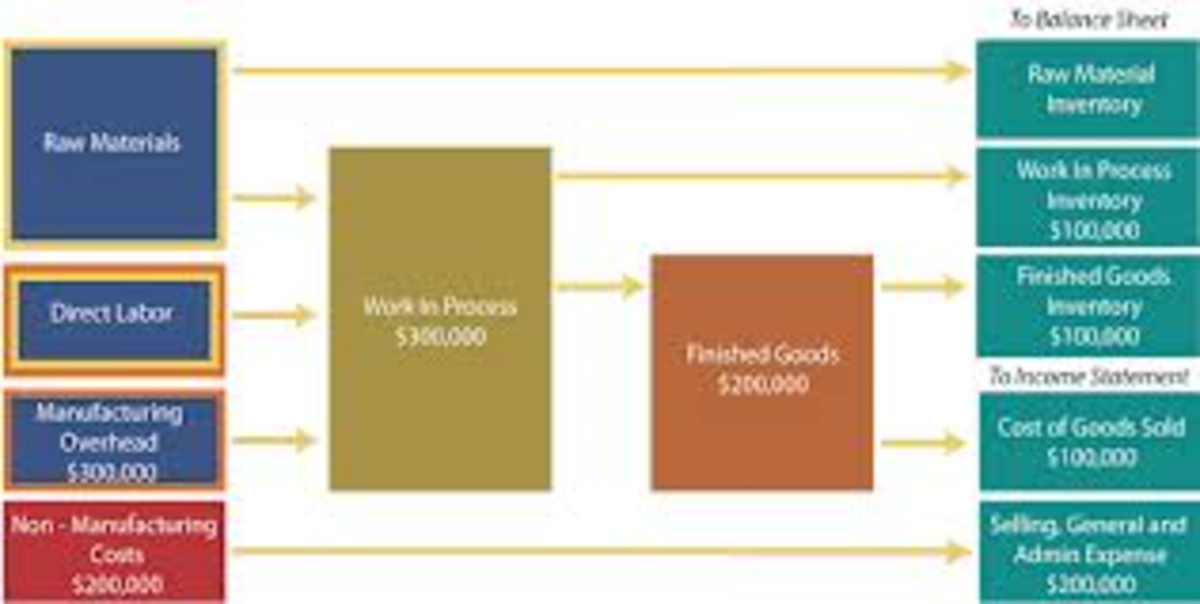
The Great Recession saw the manufacturing industry lose nearly 2 million jobs. While employment in the industry has regained some of its lost ground, job growth has remained subdued. Manufacturing faces numerous headwinds including higher prices, tariffs and a fading effect of the 2017 tax cut for corporations. These challenges are compounded by the slow global growth.
The manufacturing industry is diverse and broad. This industry has many job opportunities. These jobs are often hands-on. Manufacturing workers are responsible for the packaging and assembly of various products. They are also responsible for monitoring production processes and transporting raw materials. There are also jobs in science, technology and math.
Not only are there jobs in traditional manufacturing, but advanced manufacturing is also available. These jobs are highly technical, and the skills necessary for them may be applicable in other industries. Employers in advanced manufacturing may offer training opportunities and benefits, such as apprenticeships. These employers may also offer high wages. They can be difficult to find. A labor shortage could create incentives for employers to offer advanced manufacturing jobs.

The manufacturing industry's diversity is one of its most exciting features. There are many roles for workers in the manufacturing industry, including power plants and bakeries. A worker may also be required to manage a production staff. They might also be employed in food processing facilities such as batchmakers, fish cutters, or meat cutters.
There are many jobs available in the manufacturing sector, but the most rewarding are those in managerial and professional positions. For most production jobs, a high school diploma suffices. However, a bachelor's degree is often preferred. It is also desirable to have a technical education, particularly for jobs in manufacturing, where many workers will need to operate plant machinery. The science and technology sectors have also seen recent growth.
You can showcase your skills in production jobs. In exchange for referrals, you might offer to work free of charge at a production company if you are interested in a career in animation, film, or video. This can be a valuable experience and can lead to some rewarding connections. It is important to do research in your local area about the demand for your talents. You also need to find out if you're qualified for an entry level production job.
Numerous research studies show that there has been a significant increase in temporary workers within the production industry. This is due in large part to the Great Recession. In the past five years, the construction and healthcare industries have both reduced their use of temporary workers, while the computer and mathematical industries have seen a big increase. However, the number of temporary workers used by the manufacturing industry has almost doubled in that time.

There are many other exciting jobs in the production industry, such as audio engineers and sound technicians. A small increase has been seen in the number women working in manufacturing positions. Over the last year, the percentage of women working in the production sector has increased by 5.3 percentage points. The number of women in the industry has not grown at the same pace as that of men. This is partly due to the fact that the majority of people working in the industry are assistants.
FAQ
What is production management?
Production planning is the process of creating a plan that covers all aspects of production. This includes scheduling, budgeting and crew, location, equipment, props, and more. This document will ensure everything is in order and ready to go when you need it. It should also contain information on achieving the best results on set. This includes shooting schedules, locations, cast lists, crew details, and equipment requirements.
The first step is to outline what you want to film. You may already know where you want the film to be shot, or perhaps you have specific locations and sets you wish to use. Once you have determined your scenes and locations, it is time to start figuring out the elements that you will need for each scene. You might decide you need a car, but not sure what make or model. To narrow your options, you can search online for available models.
After you have selected the car you want, you can begin to think about additional features. Do you need people sitting in the front seats? Or maybe you just need someone to push the car around. Perhaps you would like to change the interior colour from black to white. These questions will help guide you in determining the ideal look and feel for your car. Also, think about what kind of shots you would like to capture. Do you want to film close-ups, or wider angles? Maybe you want to show the engine and the steering wheel. These things will help you to identify the car that you are looking for.
Once you have all the information, you are ready to create a plan. You will know when you should start and when you should finish shooting. You will need to know when you have to be there, what time you have to leave and when your return home. Everyone will know what they need and when. Book extra staff ahead of time if you need them. There is no point in hiring someone who won't turn up because you didn't let him know.
You will need to factor in the days that you have to film when creating your schedule. Some projects are quick and easy, while others take weeks. When creating your schedule, be aware of whether you need more shots per day. Multiple takes of the same location will lead to higher costs and take more time. It's better to be safe than sorry and shoot less takes if you're not certain whether you need more takes.
Budget setting is an important part of production planning. You will be able to manage your resources if you have a realistic budget. It is possible to reduce the budget at any time if you experience unexpected problems. However, it is important not to overestimate the amount that you will spend. If you underestimate how much something costs, you'll have less money to pay for other items.
Production planning can be a complex process. However, once you know how everything works together it will become easier to plan future projects.
What does warehouse mean?
A warehouse is an area where goods are stored before being sold. It can be indoors or out. It could be one or both.
What does it mean to be a manufacturer?
Manufacturing Industries are businesses that produce products for sale. Consumers are people who purchase these goods. These companies use various processes such as production, distribution, retailing, management, etc., to fulfill this purpose. These companies produce goods using raw materials and other equipment. This includes all types and varieties of manufactured goods, such as food items, clothings, building supplies, furnitures, toys, electronics tools, machinery vehicles, pharmaceuticals medical devices, chemicals, among others.
What is the role of a manager in manufacturing?
A manufacturing manager must ensure that all manufacturing processes are efficient and effective. They should also be aware and responsive to any company problems.
They should also be able communicate with other departments, such as sales or marketing.
They should be informed about industry trends and be able make use of this information to improve their productivity and efficiency.
Can certain manufacturing steps be automated?
Yes! Automation has been around since ancient times. The wheel was invented by the Egyptians thousands of years ago. We now use robots to help us with assembly lines.
Robotics is used in many manufacturing processes today. They include:
-
Automation line robots
-
Robot welding
-
Robot painting
-
Robotics inspection
-
Robots that create products
Manufacturing can also be automated in many other ways. 3D printing makes it possible to produce custom products in a matter of days or weeks.
What skills is required for a production planner?
A production planner must be organized, flexible, and able multitask to succeed. Also, you must be able and willing to communicate with clients and coworkers.
What is the responsibility of a logistics manager?
A logistics manager ensures that all goods are delivered on time and without damage. This is achieved by using their knowledge and experience with the products of the company. He/she also needs to ensure adequate stock to meet demand.
Statistics
- Job #1 is delivering the ordered product according to specifications: color, size, brand, and quantity. (netsuite.com)
- In 2021, an estimated 12.1 million Americans work in the manufacturing sector.6 (investopedia.com)
- According to a Statista study, U.S. businesses spent $1.63 trillion on logistics in 2019, moving goods from origin to end user through various supply chain network segments. (netsuite.com)
- You can multiply the result by 100 to get the total percent of monthly overhead. (investopedia.com)
- [54][55] These are the top 50 countries by the total value of manufacturing output in US dollars for its noted year according to World Bank.[56] (en.wikipedia.org)
External Links
How To
Six Sigma: How to Use it in Manufacturing
Six Sigma can be described as "the use of statistical process control (SPC), techniques to achieve continuous improvement." Motorola's Quality Improvement Department in Tokyo, Japan developed Six Sigma in 1986. Six Sigma's core idea is to improve the quality of processes by standardizing and eliminating defects. In recent years, many companies have adopted this method because they believe there is no such thing as perfect products or services. Six Sigma aims to reduce variation in the production's mean value. You can calculate the percentage of deviation from the norm by taking a sample of your product and comparing it to the average. If it is too large, it means that there are problems.
Understanding the dynamics of variability within your business is the first step in Six Sigma. Once you have a good understanding of the basics, you can identify potential sources of variation. It is important to identify whether the variations are random or systemic. Random variations occur when people do mistakes. Symmetrical variations are caused due to factors beyond the process. Random variations would include, for example, the failure of some widgets to fall from the assembly line. But if you notice that every widget you make falls apart at the exact same place each time, this would indicate that there is a problem.
Once you identify the problem areas, it is time to create solutions. You might need to change the way you work or completely redesign the process. Once you have implemented the changes, it is important to test them again to ensure they work. If they didn't work, then you'll need to go back to the drawing board and come up with another plan.